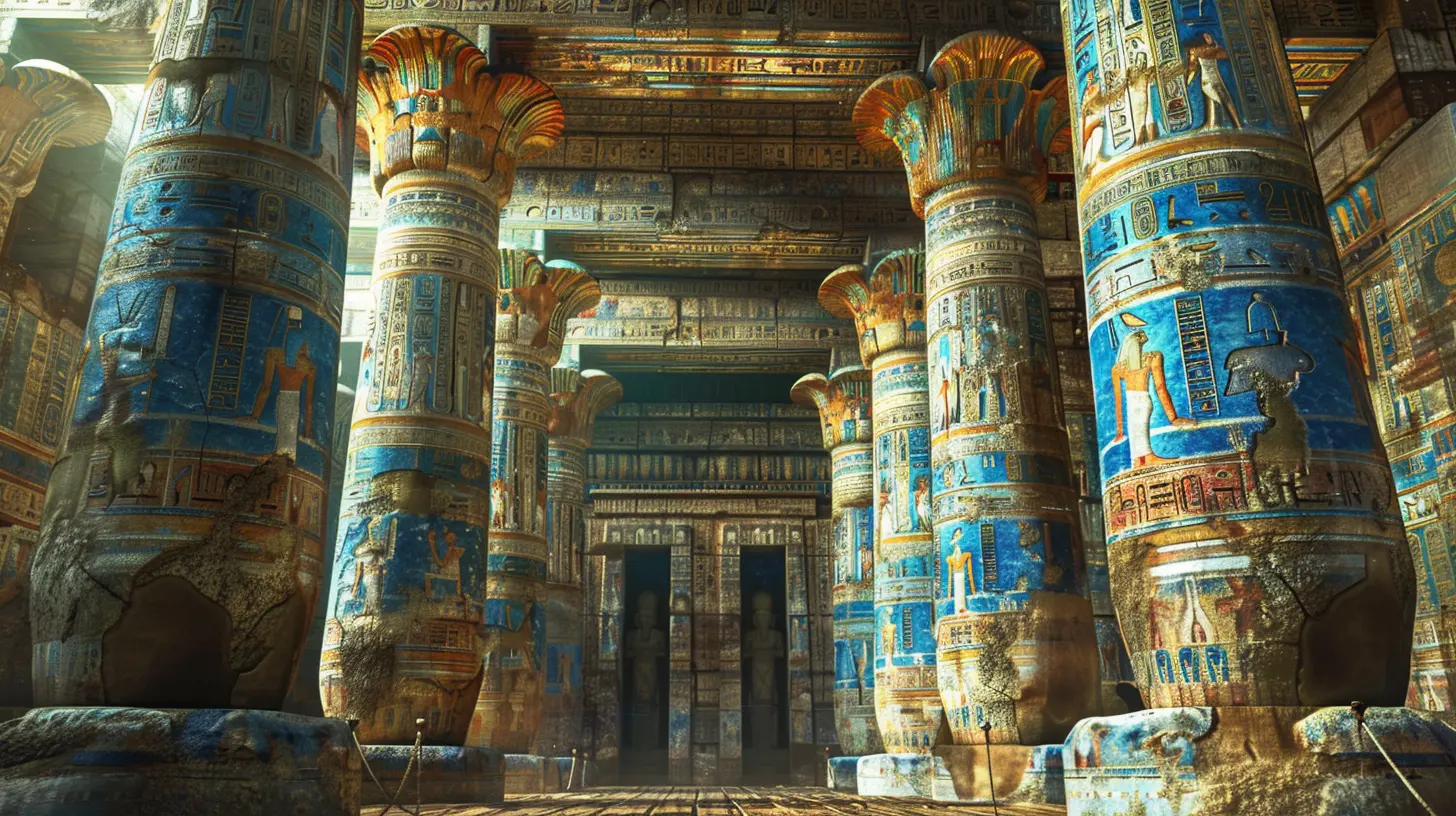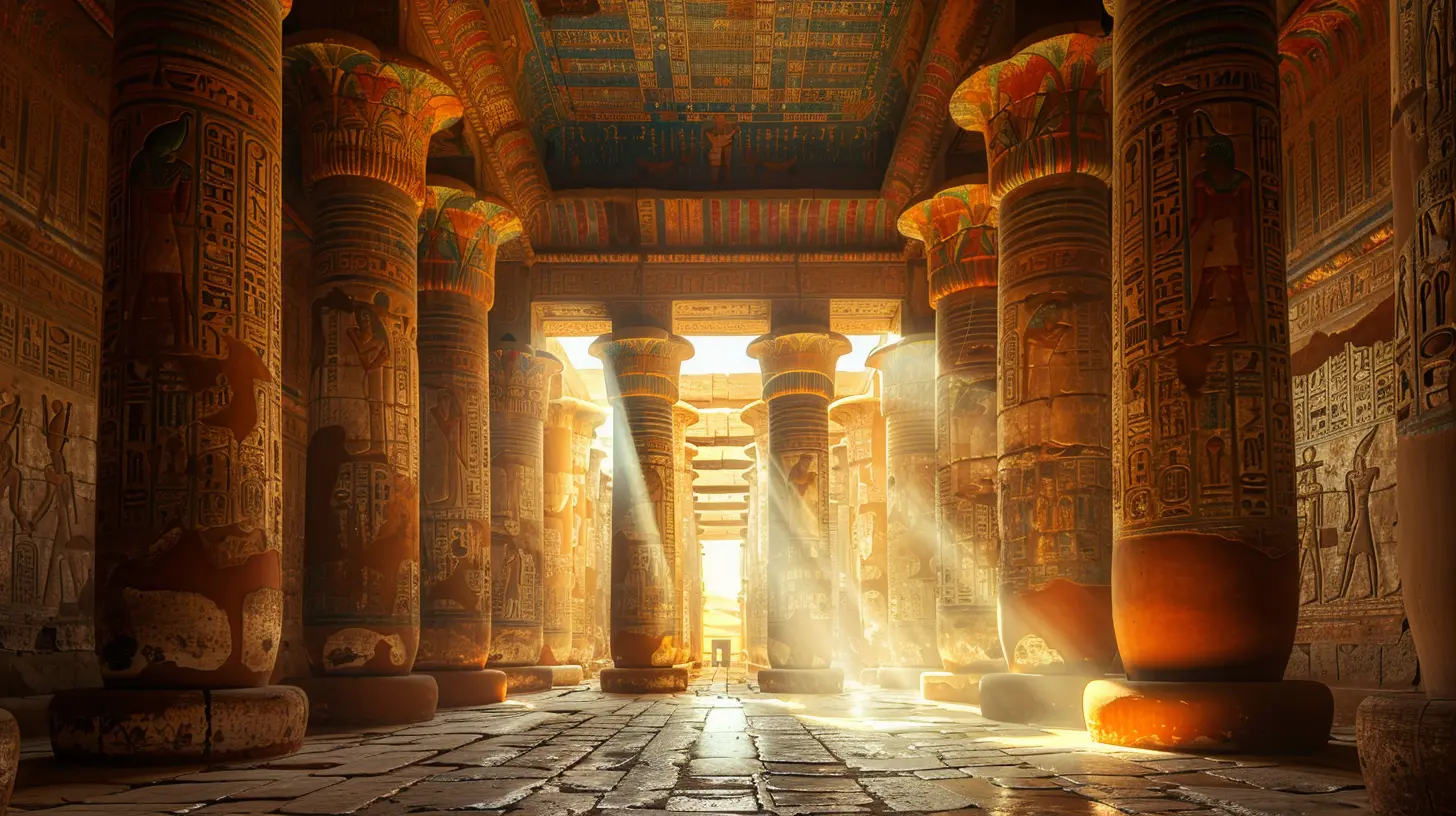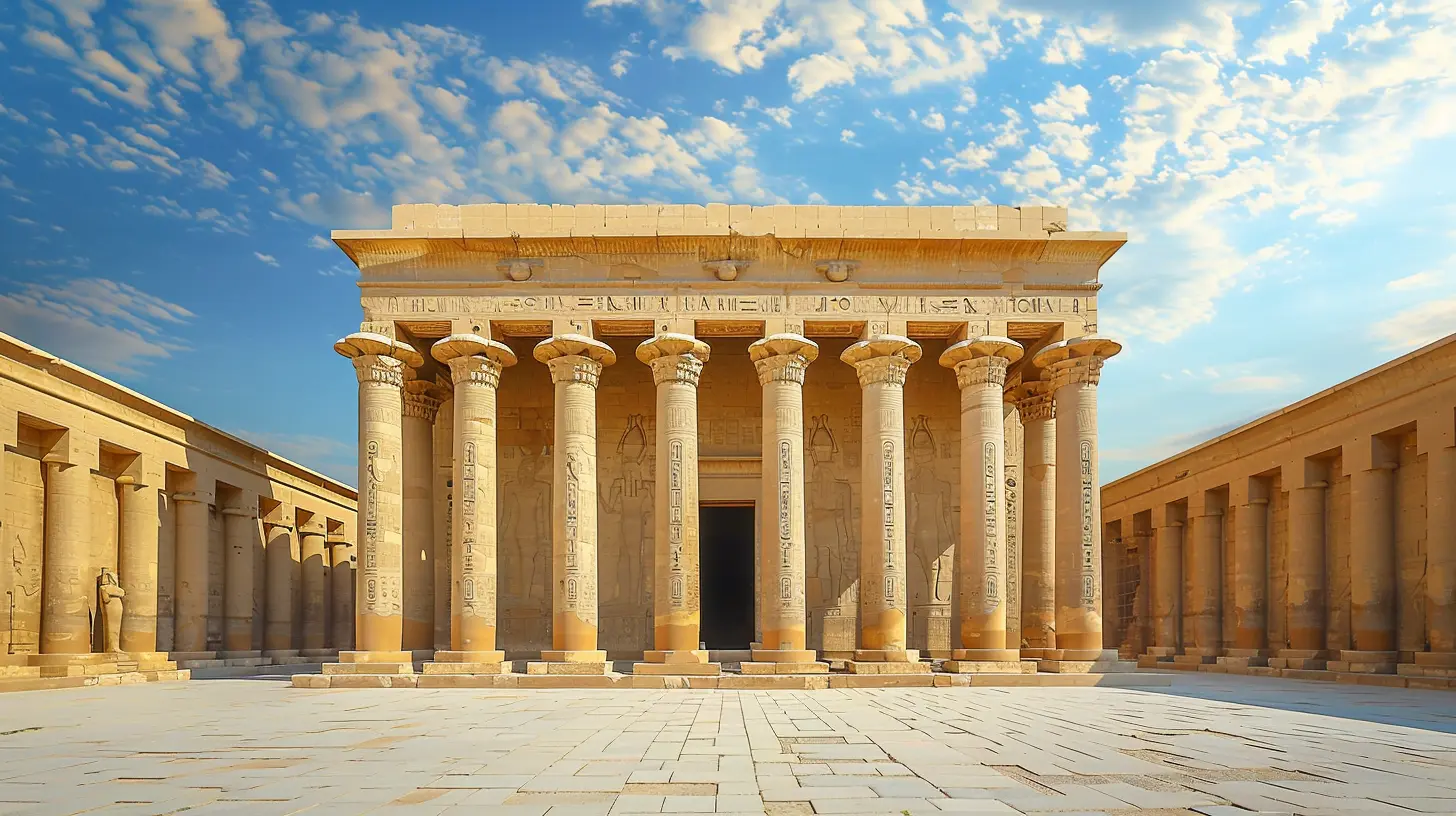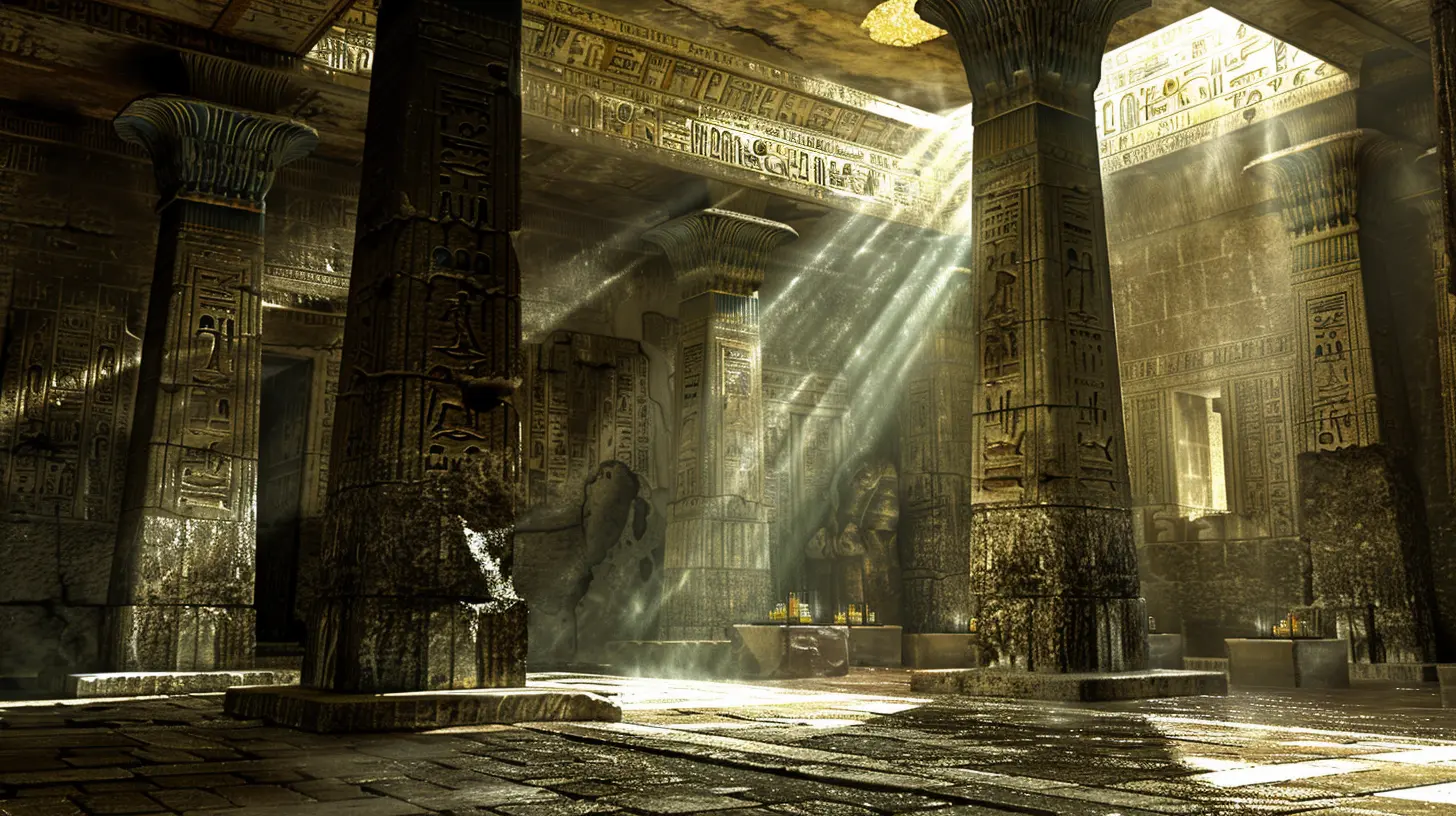Unveil the Mysteries of Egypt’s Ancient Temples
12 June 2025
Have you ever dreamed of stepping back in time, wandering through awe-inspiring structures that have withstood the test of centuries? Egypt’s ancient temples aren’t just stone and hieroglyphs—they are time capsules of a civilization that shaped the world as we know it. From colossal statues to sacred hieroglyphs whispering tales of gods and pharaohs, each temple holds secrets waiting to be unraveled.
So, tighten your sandals and grab your sun hat! We're about to embark on a journey through Egypt's mesmerizing temples, where history, mystery, and grandeur collide. 
The Timeless Allure of Egypt’s Temples
Egypt’s temples are more than just stunning ruins; they are a testament to a civilization that thrived for thousands of years. Every pillar, carving, and corridor tells a story—of deities worshiped, kings honored, and mystical rituals performed.But what makes these temples so captivating?
- Their sheer size and grandeur – Many of these structures were built to inspire awe, standing as eternal monuments to the pharaohs and gods.
- The mysteries they hold – From the enigmatic inscriptions to the alignment of structures with celestial bodies, these temples are filled with unsolved puzzles.
- Their role in history – Each temple played a significant religious, political, or social function in ancient Egyptian life.
Now, let’s delve into some of the most iconic temples that continue to fascinate travelers and historians alike. 
Karnak Temple: The Largest Religious Complex in the World
If there’s one temple that deserves to be on every traveler’s bucket list, it’s Karnak Temple. Located in Luxor, this is not just a single temple—it’s an entire complex of sanctuaries, pylons, and towering columns dedicated to the gods.Why is Karnak Temple so special?
- It’s enormous – Covering over 200 acres, Karnak is the largest religious complex ever built.- The Hypostyle Hall is breathtaking – Imagine standing beneath 134 towering columns, each covered in intricate hieroglyphics. It’s a scene straight out of an adventure movie.
- It was built over 2,000 years – Each pharaoh added their touch, making it a layered masterpiece of different architectural styles.
Walk through its grand avenues and let your imagination run wild—was this the very place where priests once chanted hymns to the gods? 
Luxor Temple: The Temple of Man
Just a short distance from Karnak lies Luxor Temple, a magnificent structure dedicated to the rejuvenation of kingship. Unlike many temples built primarily for gods, Luxor Temple played a pivotal role in the coronation of pharaohs.What makes Luxor Temple unique?
- It’s beautifully preserved – Despite the passage of millennia, much of the temple still stands strong.- It comes alive at night – Visiting Luxor Temple after sunset is pure magic! Illuminated by golden lights, it feels like stepping into a divine realm.
- Connected to Karnak – The two temples were once linked by the Avenue of Sphinxes, which is now being restored.
Picture yourself walking where pharaohs once trod—what stories would these ancient stones tell? 
Abu Simbel: Ramesses II’s Masterpiece
Deep in southern Egypt, near the Sudanese border, stands Abu Simbel, the grand temple of Pharaoh Ramesses II. It isn’t just famous for its massive statues but also for an engineering marvel that saved it from Lake Nasser’s waters.Why is Abu Simbel legendary?
- The gigantic statues of Ramesses II – Four colossal figures of the king guard the entrance, each towering at 20 meters!- The miraculous relocation – In the 1960s, the entire temple was cut into pieces and moved to higher ground to save it from submersion.
- Solar alignment – Twice a year, sunlight penetrates the temple to illuminate the statues inside—a testament to ancient Egyptian astronomical precision.
Standing before these statues, you can’t help but feel dwarfed by the power that once ruled this land.
Temple of Hatshepsut: The Queen’s Marvel
Egypt wasn’t only ruled by mighty kings—one queen, Hatshepsut, left her mark like no other. Her mortuary temple, located at Deir el-Bahari, is a breathtaking example of architectural ingenuity.What sets Hatshepsut’s temple apart?
- A harmonious blend of nature and architecture – Built into the cliffs, it seamlessly merges with the desert landscape.- A rare tribute to a female ruler – Hatshepsut declared herself pharaoh in a male-dominated world, and this temple stands as a testament to her legacy.
- Survived despite attempts to erase her – Later pharaohs tried to erase her from history, but her temple remains—a monument of defiance.
Picture yourself climbing its grand staircase—can you sense the echoes of a powerful queen who once defied the norms?
Philae Temple: The Jewel of the Nile
If there’s one temple that embodies serenity, it’s Philae Temple. Dedicated to the goddess Isis, this temple sits on an island, adding to its enchanting aura.Why is Philae one of Egypt’s most enchanting temples?
- It’s only accessible by boat – The journey itself adds to its magical atmosphere.- Saved from the waters – Like Abu Simbel, Philae was relocated to preserve its grandeur.
- A temple devoted to love and motherhood – Isis, the goddess it honors, symbolized love, protection, and magic.
As you glide across the Nile to Philae, it feels like crossing into another realm—where gods once walked among mortals.
The Enduring Legacy
Egypt’s ancient temples are more than just historical sites; they are living testaments to human ambition, faith, and artistry. Walking through these grand corridors, it's impossible not to feel the weight of history pressing against you—like whispers from a world long past but never truly gone.So, are you ready to unveil the mysteries of Egypt’s ancient temples? Pack your bags, let history guide your footsteps, and experience the magic for yourself!
all images in this post were generated using AI tools
Category:
Top AttractionsAuthor:

Winona Newman
Discussion
rate this article
3 comments
Noemi Long
This article beautifully captures the essence of Egypt’s ancient temples. I appreciate the insights and vivid descriptions, which inspire a deeper appreciation for this incredible history. Thank you for sharing these hidden treasures and encouraging exploration of such a rich culture!
June 20, 2025 at 2:39 AM

Winona Newman
Thank you for your kind words! I'm glad you enjoyed the article and feel inspired to explore Egypt's fascinating history.
Zevran Reese
Step back in time, where history whispers secrets timeless.
June 15, 2025 at 4:28 AM

Winona Newman
Thank you! Egypt’s ancient temples truly hold stories that echo through the ages.
Noemi McMurtry
Unravel history's secrets—Egypt's temples whisper tales of time's embrace.
June 12, 2025 at 3:46 PM

Winona Newman
Thank you! Egypt's ancient temples truly hold profound stories waiting to be discovered.



